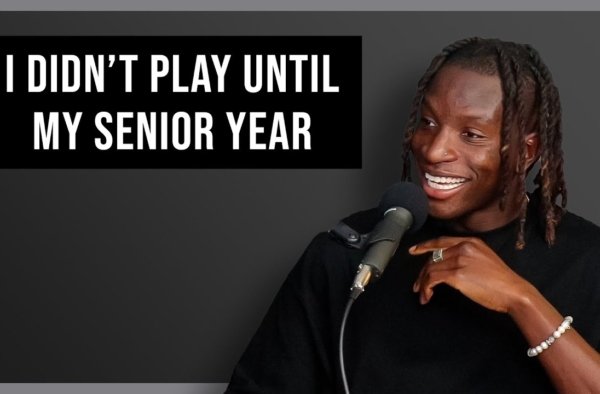In recent years, a growing number of elite high school soccer players and athletes from various sports have begun opting to attend gap year academies before enrolling in a university. This trend, which is gaining momentum across the United States and beyond, is driven by a number of factors, from the need to improve academic standing to the desire to enhance athletic performance and readiness for the next level of competition. These gap year programs, also known as post-graduate (PG) schools or academies, offer young athletes a unique opportunity to bridge the gap between high school and university, helping them develop both on and off the field.
1. Improving Academic Standing
One of the most common reasons athletes choose to attend a gap year academy is the need to improve their academic standing. Elite high school athletes often face rigorous schedules that require balancing schoolwork with travel, training, and competition. This can sometimes lead to lower grades, as academic performance may take a back seat to athletic pursuits. For many, the decision to attend a gap year academy is a chance to focus on their studies without the intense pressure of competitive collegiate athletics right away.
Gap year academies often provide academic support tailored to each student-athlete’s needs. This can include small class sizes, individualized attention, and access to tutoring and mentorship. These programs allow athletes to strengthen their academic profiles, retake standardized tests if necessary, and complete any remaining coursework required for university admission. By improving their grades and test scores during the gap year, many athletes are able to increase their chances of being accepted to more competitive universities and securing scholarships that may not have been available to them otherwise.
2. Developing Athletic Maturity
Athletic development and maturity are crucial factors in an athlete’s long-term success, particularly in highly competitive sports like soccer. Many elite high school athletes may be physically gifted, but they often require more time to mature athletically. This can involve refining their skills, improving their strength and conditioning, or learning the nuances of their sport at a higher level. Gap year academies provide an environment specifically designed to help athletes focus on these areas of improvement.
At the right gap year academy, athletes have access to top-tier coaching and facilities, giving them the tools they need to enhance their performance. This often includes individualized strength and conditioning programs, position-specific training, and mental skills development. Athletes can focus on their sport full-time, allowing them to make significant strides in their athletic maturity that would be harder to achieve in the traditional high school setting, where attention is divided between academics and athletics and for many players lower-level coaching.
For many athletes, this period of concentrated development, with high-level coaching, can make the difference between being a good player and an elite-level competitor. By the time they enter university, they are often better prepared to handle the physical and mental demands of collegiate athletics, giving them an edge over their peers.
3. Increased Playing Time
One of the biggest challenges facing young athletes entering the collegiate sports scene is the competition for playing time. In university sports, the competition for spots on the roster can be intense, especially in soccer, where rosters are often loaded with older, more experienced players. Many 18- and 19-year-old freshmen find it difficult to break into lineups when they are competing against seasoned players who are 20, 21, or even 22+ years old.
Gap year academies offer a solution to this challenge by providing athletes with increased playing time. At these academies, players are often given more opportunities to play in competitive matches and showcase their skills, something they may not experience right away at the university level. This consistent playing time allows them to gain valuable match experience, improve their game sense, and build confidence.
Additionally, competing at a high level against other top athletes in their age group gives gap year players the chance to develop their tactical understanding of the game, which is crucial for succeeding at the collegiate level. When they eventually enter university, they are better prepared to compete for playing time against older, more experienced players.
4. Preparation for University Life
Many young men struggle at universities not exclusively because of the demand of their sport but because of all of the demands and opportunities off the field. Learning to set a schedule, be disciplined, and say no to opportunities that do not lead to your goals is critical to success.
Thus, another significant benefit of attending a gap year academy is the opportunity to prepare for the challenges of university life. For many young athletes, the transition from high school to college can be daunting, particularly if it involves living away from home for the first time. Gap year academies serve as a steppingstone, providing a structured environment where student-athletes can learn essential life skills before entering the more independent setting of a university.
At a gap year academy, athletes live in a supervised environment, which helps them develop time management, self-discipline, and other skills needed to balance academics and athletics at the collegiate level. They learn how to live away from home, manage their schedules, and take responsibility for their own development—both athletically and academically. This transitional experience can be invaluable in helping young athletes adjust to the demands of university life, reducing the chances of feeling overwhelmed when they arrive on campus.
5. More Rapid Player Development
Many gap year academies run superior soccer development programs compared to community colleges and universities, often hiring better coaches and creating an environment that fosters accelerated growth. Unlike college programs bound by NJCAA and NCAA restrictions on training during the spring and summer, these academies offer year-round training that mimics the structure of professional clubs. This allows players to train consistently and develop at a faster pace.
Additionally, gap year academies often provide athletes the opportunity to play in competitive leagues such as the United Premier Soccer League (UPSL) and participate in international friendlies. Competing against older, more experienced players in these environments offers invaluable experience, helping young athletes improve their game at a higher level of competition. Playing in such matches pushes athletes to adapt to faster-paced, more physically demanding games, allowing them to hone their skills under pressure.
With access to high-level coaching, top-tier facilities, continuous training, and competitive match experience, players can sharpen their skills and reach new heights. The absence of strict training limitations gives them an edge in their development, often producing athletes who are more prepared for the intensity of college soccer or even professional opportunities.
Conclusion
The decision to attend a gap year academy is a strategic one for many elite high school soccer players and their parents. Whether the goal is to improve grades, develop athletic maturity, gain increased playing time, or prepare for the challenges of university life, gap year academies offer a tailored environment that helps young athletes achieve their full potential. Additionally, these academies often provide an accelerated path to athletic development, which can be crucial for players aiming to excel at the next level.
These programs not only equip athletes with the tools they need to succeed in collegiate sports but also increase their chances of earning scholarships to competitive university programs. For athletes looking to maximize their academic and athletic potential, a gap year at a specialized academy offers a unique and highly effective bridge between high school and university life, setting them up for long-term success both on the field and in the classroom.




